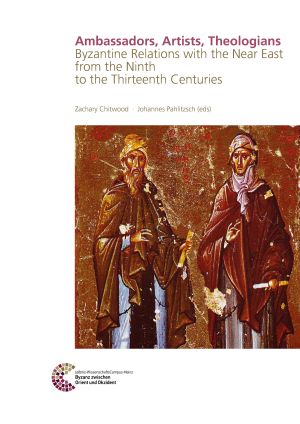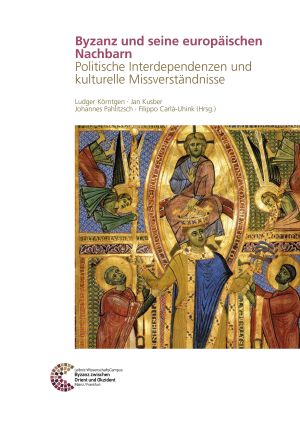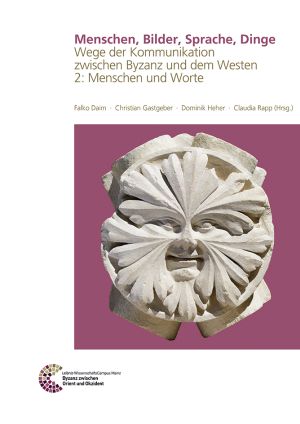Chitwood, Zachary
Ambassadors, Artists, Theologians: Byzantine Relations with the Near East from the Ninth to the Thirteenth Centuries
Die Autoren des Sammelbandes »Ambassadors, Artists, Theologians: Byzantine Relations with the Near East from the Ninth to the Thirteenth Centuries« untersuchen die komplexe Dynamik zwischen dem Byzantinischen Reich und dem Nahen Osten.
Die hier gesammelten Beiträge gehen über die Tradition des histoire événementielle hinaus und verdeutlichen den Übergang künstlerischer Praktiken, Ideen und Gesprächspartner zwischen Byzanz und der islamischen Welt. Auf diese Weise versucht dieser Band, unser Verständnis der Beziehung zwischen diesen beiden mittelalterlichen Kulturbereichen zu nuancieren und zu kontextualisieren.
Byzanz und seine europäischen Nachbarn: Politische Interdependenzen und kulturelle Missverständnisse
Kulturelle Missverständnisse stellen einerseits eine Grundbedingung interkultureller Kommunikation dar, können andererseits aber auch als Modus oder Ergebnis von Interkulturalität und transkulturellen Beziehungen verstanden werden. Dabei gibt es sowohl unreflektierte als auch provozierte oder politisch ausgenutzte Missverständnisse bzw. vermeintliche Missverständnisse, die reale politische oder kirchenpolitische Interessensgegensätze verdecken, wie auch Missverständnisse der Forschung, die mitunter vorschnell ein Missverständnis konstatiert, wo Logik und Sinnzusammenhang sich nicht sofort erschließen. Derlei Missverständnisse bestimmten das politisch-kulturelle Beziehungsgefüge zwischen Byzanz, dem lateinisch geprägten Westen und der slavischen Welt, die sich allesamt als Teile der christlichen Ökumene begriffen und über viele Jahrhunderte in engem politischen und kulturellen Kontakt standen. Der Untersuchung dieses Phänomens widmen sich im vorliegenden Band Vertreterinnen und Vertreter von Geschichtswissenschaft, Byzantinistik, Kunstgeschichte und Theologie.
Menschen, Bilder, Sprache, Dinge: Wege der Kommunikation zwischen Byzanz und dem Westen 2: Menschen und Worte
2018 zeigt das Römisch-Germanische Zentralmuseum Mainz in Zusammenarbeit mit der Schallaburg in dem prachtvollen Renaissanceschloss nahe Melk (Niederösterreich) die Ausstellung »Byzanz & der Westen. lOOO vergessene Jahre«.
Beide, Byzanz und der europäische Westen, entspringen dem römischen Weltreich, doch nehmen sie schon ab der Spätantike unterschiedliche Entwicklungen. Während das Römische Reich im Osten Bestand hatte und nahtlos in das Byzantinische Reich des Mittelalters überging, traten im Westen gentile Herrschaften an dessen Stelle, Königreiche der Goten, Vandalen, Angelsachsen, Langobarden und Franken. Zwar blieb Byzanz zumindest 800 Jahre lang für die anderen europäischen Entitäten respektierte oder akzeptierte Großmacht, doch kam es sehr schnell zu Gebietsstreitigkeiten, Zwistigkeiten und kulturellen Differenzen. Zudem wurde die Verständigung immer schwieriger - im »orthodoxen« Osten war Griechisch Verkehrssprache, im »katholischen« Westen Latein die lingua franca. Unterschiede in Liturgie und Glaubensfragen verstärkten die Differenzen oder wurden (religions)politisch zur Betonung der Verschiedenheit sogar noch unterstrichen. Aber immer noch bewunderte man das »reiche Konstantinopel« und die byzantinischen Schätze - darunter die herrlichen Seiden, Elfenbeinreliefs, technische Wunderwerke, die vielen Reliquien, grandiose Bauwerke.
Die Wende kam 1204 mit der Eroberung und Plünderung Konstantinopels durch die Kreuzfahrer. Für das bereits vorher geschwächte Byzantinische Reich bedeutete diese Katastrophe eine völlige neue Situation als ein Exilreich, dessen Kaiser und Patriarch nach Kleinasien ausweichen mussten. In einem Großteil des ehemals europäischen Byzantinischen Reiches machten sich Kreuzfahrerstaaten breit; Venedig und Genua, die durch Sonderverträge schon zuvor als Handelsmächte stark präsent waren, wurden zu bestimmenden Faktoren der westlichen Mächte im Osten.
Anlässlich dieser Schau erscheinen zwei Begleitbände mit insgesamt 41 Beiträgen zu den ebenso vielfältigen wie wechselhaften Beziehungen zwischen dem lateinischen Westen und dem Byzantinischen Reich. Die Bände sind nach den Medien der Kommunikation strukturiert: Menschen, Bilder, Sprache, Dinge. Sie versammeln Beiträge namhafter Wissenschaftlerinnen und Wissenschaftler mit archäologischer, kunsthistorischer, philologischer und historischer Schwerpunktsetzung. Mehrere Überblicksdarstellungen und Detailstudien schöpfen aus Forschungsprojekten des Leibniz-WissenschaftsCampus Mainz: Byzanz zwischen Orient und Okzident sowie dem Schwerpunkt Byzanzforschung und Mittelalterforschung der Österreichischen Akademie der Wissenschaften in Wien.









